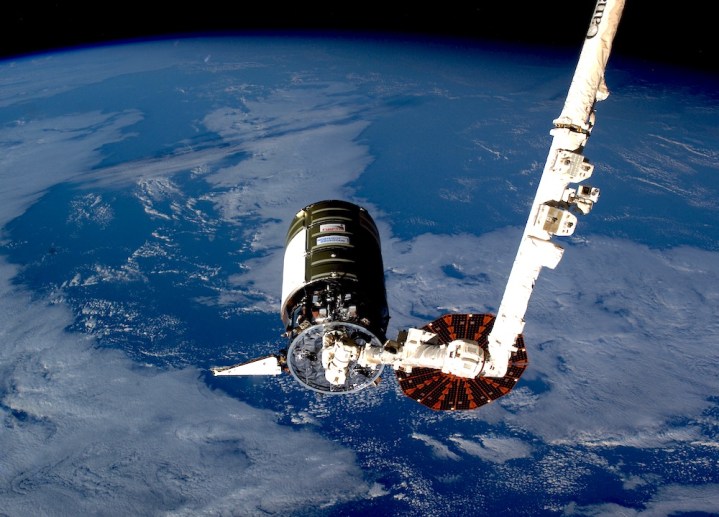Despite having only one of its two solar arrays deployed, NASA’s Cygnus spacecraft successfully docked with the International Space Station (ISS) on Wednesday.

The uncrewed Cygnus NG-18 spacecraft launched aboard an Antares rocket from NASA’s Wallops Flight Facility in Virginia early on Monday morning, carrying more than 8,000 pounds of supplies for the crew aboard the station.
But several hours after launch, only one of the spacecraft’s two circular solar arrays properly deployed.
The arrays help to power the Northrop Grumman-built spacecraft, and so, as the vehicle made its way to the ISS, NASA decided to carry out checks on the stability and condition of the Cygnus before deciding whether to attempt the docking procedure.
The decision was taken to proceed as usual, and at 5:20 a.m. ET on Wednesday, NASA astronaut Nicole Mann used the station’s Canadarm2 robotic arm to capture the approaching spacecraft.
Mission control in Houston then took control, commanding the arm to rotate Cygnus to its installation orientation before guiding it in for docking to the space station’s Unity module port. Astronauts will soon enter the spacecraft to begin transferring the supplies to the station.
The hiccup with the Cygnus is a rare event, as 17 previous missions to the ISS since the first one in 2013 have gone without incident. Only once has Cygnus failed to reach the ISS, but that was down to a rocket explosion shortly after a launch in 2014.
It’s not yet clear why the spacecraft’s second solar array failed to deploy, though engineers will be relieved that the docking was able to be achieved without any apparent difficulties. Northrop Grumman and NASA will continue to examine the issue to try to determine why the second array stayed closed.
The Cygnus spacecraft will stay docked at the ISS until late January, when it will depart and burn up as it enters Earth’s atmosphere.
Editors' Recommendations
- Junk from the ISS fell on a house in the U.S., NASA confirms
- Russian Soyuz on its way to ISS after being delayed due to electrical issue
- Here’s the new science that’s launching to the ISS today
- How to watch Crew-8 arrive at the space station tonight
- How to watch SpaceX Crew-8 launch to the space station tonight


